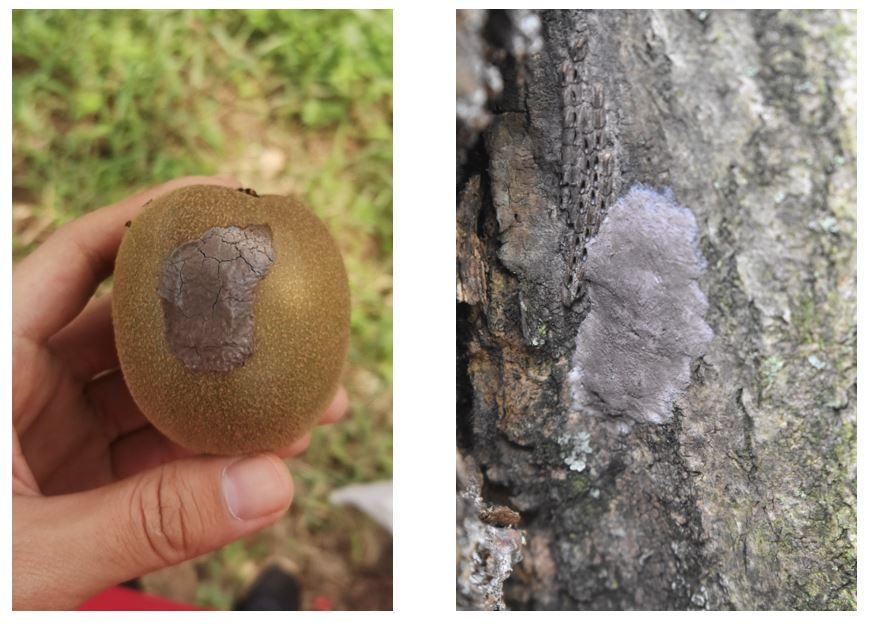Spotted lanternfly
Pest ranking based on the KVH risk matrix
| Likelihood of entry | Likelihood of establishment | Production impacts | Market access impacts |
| Low | High | High | Low |
The Spotted lanternfly (SLF) is an emerging biosecurity threat to kiwifruit and many other horticultural industries. The pest is hard to control and is a proven invader, capable of flying and hitchhiking on inanimate objects.
SLF attacks over 70 host species, including kiwifruit, grapes, stonefruit and pipfruit. It's preferred host is Tree of Heaven, which is present in New Zealand and considered an invasive weed.
Adults and nymphs feed on young stems and bark tissue with their piercing and sucking mouthparts and excrete large amounts of sticky liquid called honeydew. Extensive feeding results in oozing wounds on trunks, wilting and death of branches. It could severely impact the kiwifruit industry through the sooty mould left on fruit, which renders the fruit unmarketable.
Native to Asia, SLF has invaded North America, where it's numbers have grown rapidly. It is thought to have entered as egg masses on landscaping stone from China and eradication attempts have been unsuccessful. The impacts of SLF have been described as worse than Brown Marmorated Stink Bug (BMSB).
How could it get to New Zealand? The SLF lays its eggs in clusters on smooth surfaces (including vehicles and machinery, shipping containers, and garden furniture) and covers them with a protective layer of wax. The eggs can then hitchhike on these and other commodities imported into New Zealand. The egg masses are difficult to see and hard to treat with insecticide - see images below of egg masses on kiwifruit and tree bark.

- Watch a video from CBS in Pennsylvania, where the expanding SLF population is wreaking havoc for farmers and making a mess of people's homes, vehicles and outdoor furniture, particularly because of the honeydew it leaves behind.
- Chinese papers on the impact of SLF to kiwifruit - a report providing a collation of the translation of six Chinese publications on the SLF on kiwifruit in China. It highlights the impacts of SLF on kiwifruit and control methods they use to manage it on-orchard.
- Review of biology, ecology and management - a review of the biology, distribution, impacts and management of SLF. Includes information about potential control options for kiwifruit growers in New Zealand.
- Pest risk assessment - a scientific analysis of the risks associated with SLF on multiple pathways. It assesses the likelihood of entry, exposure, establishment and spread of SLF should it enter and establish in New Zealand.
- Pest risk assessment summary - a brief and easy-to-read KVH summary of the risk assessment above, specifically for kiwifruit growers.

